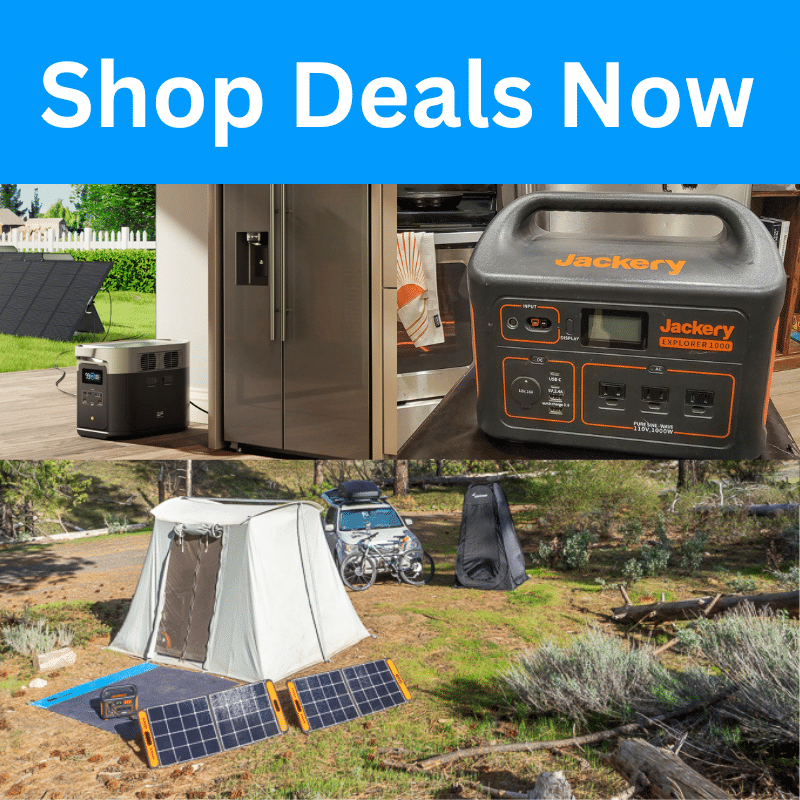Before some van life Instagram influencer convinces you to break up with your partner, buy a dog, and hit the road in a $100K van, consider some van life alternatives.
Don’t worry, I have also been enamored with tiny homes, van life, and simple, mobile living.
However, I went with a van life alternative. Using a combination of my SUV and a heavy-duty canvas tent. It might be enough to scratch your itch, or you might think I’m crazy.
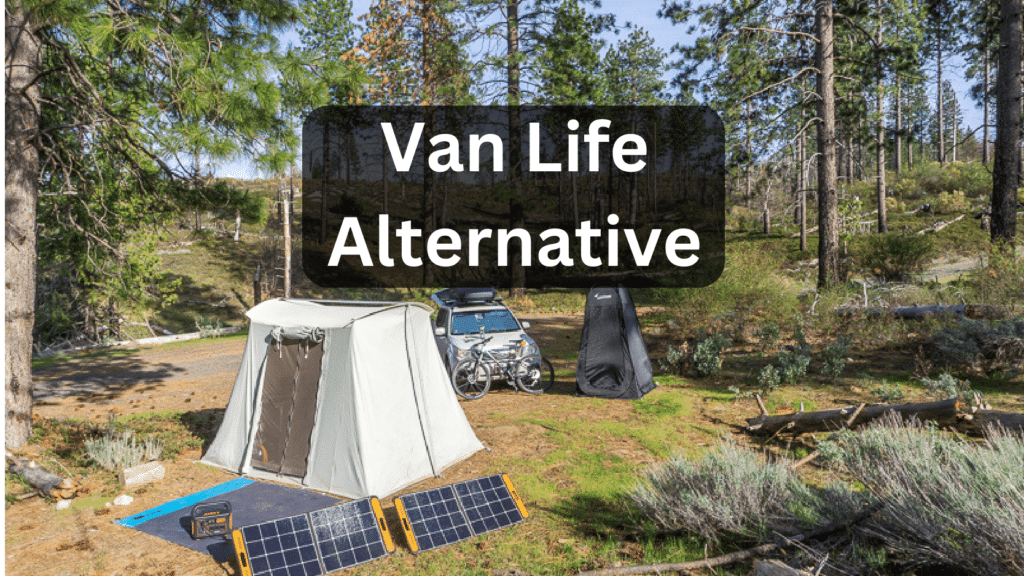
Some links go to related content, but I also use affiliate links where I earn a small amount at no cost to you. If you’re interested in my full gear list, you can read it here: current gear list.
Related topics not covered in this article: Scrubba Laundry, my DIY Toilet, my favorite car camping mattress.
Van Life Alternative: SUV and Canvas Tent Life
It doesn’t make a great hashtag, but my solution to try van life was using my SUV and a $900 canvas tent.
The SUV was my mobility, and the tent allowed me to work remotely when no amenities were nearby.
I’ve been working remotely since 2018, and I kept taking the “remote” part more seriously each year. I enjoy being outside, running, hiking, and biking, so it was a way to try and do that more.
SUV Life as a Van Life Alternative
If you’re on the fence, living in an SUV provides a glimpse into van life.
You are fully mobile and in a small space. The downside is it’s a really, really small space, and you won’t be “living” in the SUV, you’ll just be sleeping in it for the most part.
The biggest challenge is to keep yourself from getting bored. I did this primarily by running, mountain biking, and driving to new locations.
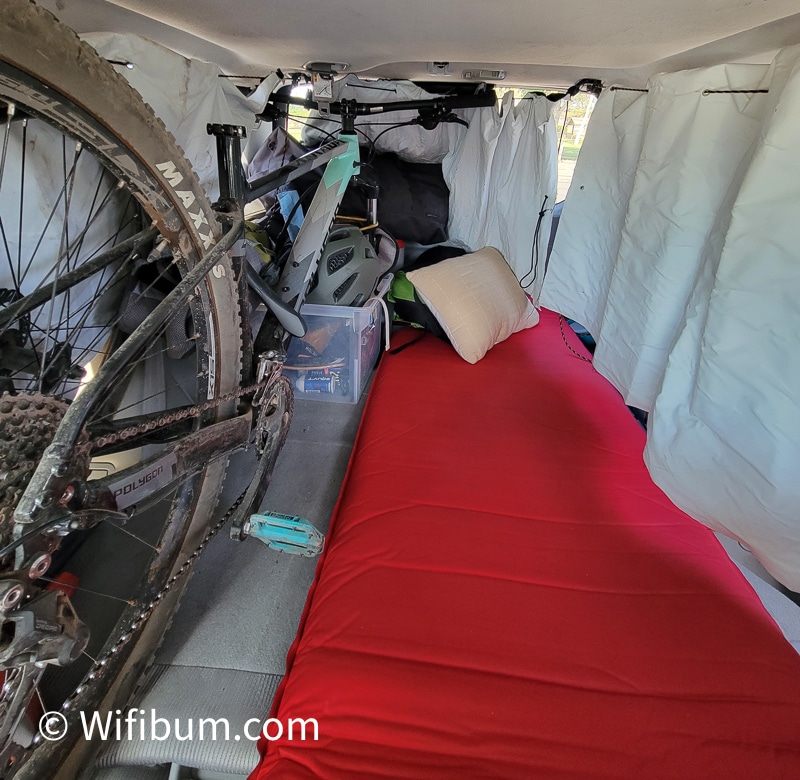
Similarly to van life, you deal with the heat, the cold, finding places to sleep, etc.
But then you have the unique problem of figuring out the bathroom situation in various situations.
Benefits of SUV Life over Van Life
I don’t have experience with van life, but here is what I think the benefits of SUV life are over it:
- Cheaper upfront cost
- Easier and less stressful to pivot out of the lifestyle
- Easier to be stealth (although my cargo box probably didn’t help)
- Better gas mileage
- Can handle backcountry roads better (useful in Utah)
Drawbacks of SUV Life vs Van Life
- Super tiny space, not much storage
- No running water (I used scepter water cans for water storage)
- Bathroom emergencies are difficult to handle when city camping
- No cooking space
- No refrigeration (unless you get a portable camping fridge or constantly buy ice in the summer for a cooler)
- Not comfortable to sit / hang out in for long periods
- Not sustainable year-round
My canvas tent solved a few of these issues in exchange for being less mobile.
Similarities of SUV Living and Van Living
- Battling the heat and cold can be a nuisance
- Life on the road can get lonely
- Constant worry about vehicle breakins and theft
- I had a lot of fun (at least in the beginning)
- Getting sick is a much worse experience than if you have your own home or apt to recover in
- Power stations for van life and SUV life are the same if you don’t DIY
Other Thoughts
Everything. Takes. Longer. From cooking, cleaning, showering, packing up camps, etc.
You probably won’t save as much money compared to what you thought you would.
You can read about the issues and potential solutions of SUV living here.
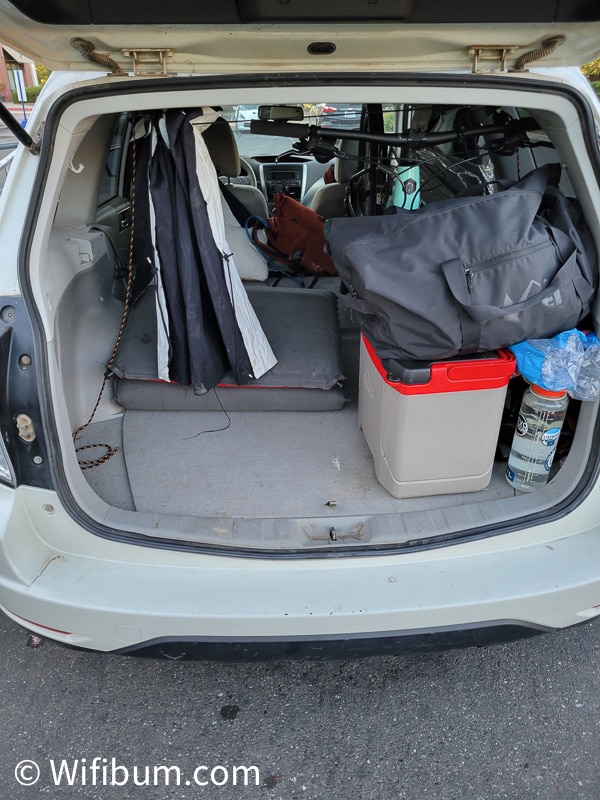
Canvas Tent Life
Several years ago, I started working remotely outside to justify 8-hour drives to areas I wanted to visit from my apartment.
It was too much driving for a weekend trip. And working from coffee shops wouldn’t work because there are no coffee shops or amenities in many places.
It started with a simple screen tent and getting internet while camping.
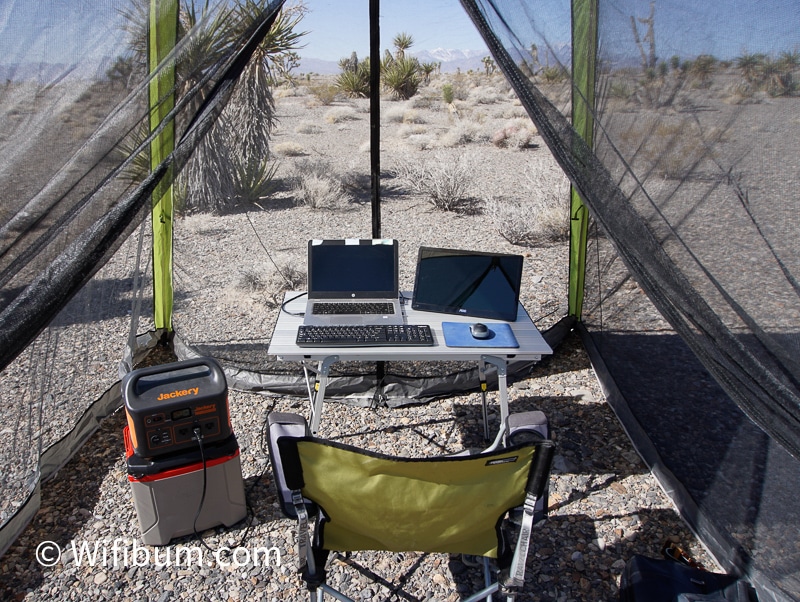
A year later, I had a full backcountry office setup.
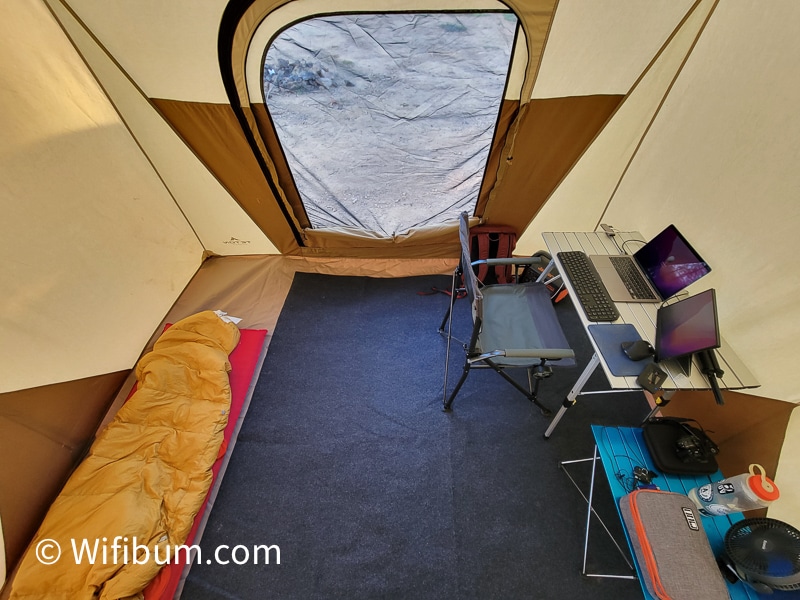
Why Live in a Canvas Tent?
Living in a tent, especially a canvas tent, is more feasible than I initially thought.
They are waterproof and can handle inclement weather. In addition, you can use a heater to warm your tent up in the morning.
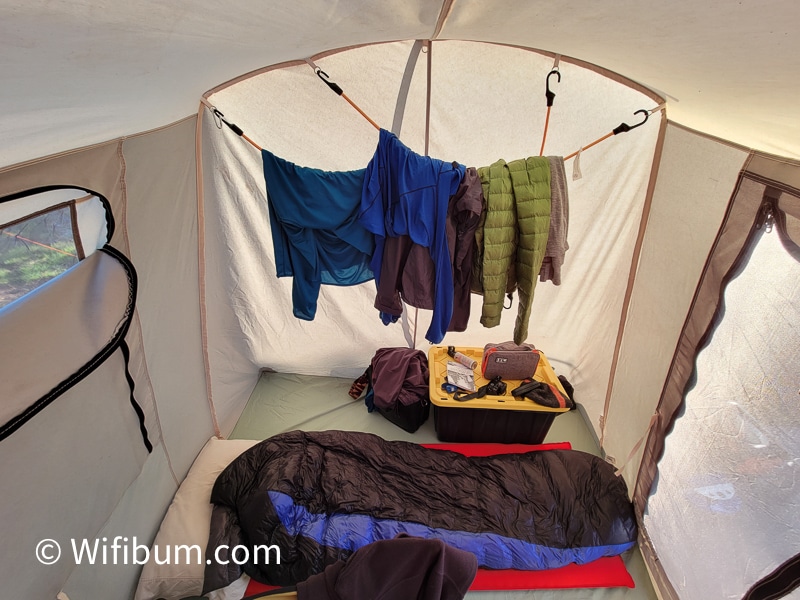
The tents I’ve used over the past few years range from 9’x7′ to 10’x10′ – they give you that much-desired “homey” feeling and space that living in an SUV lacks.
Van Life Alternative: Combining SUV Life with Canvas Tent Living
The key to my van life alternative was combining SUV living and tent living.
For example, I spent a week in Napa, which has no (legal) public land to camp on. In that case, the tent went in the cargo box, and I cleared out a spot to sleep in the back of my SUV.
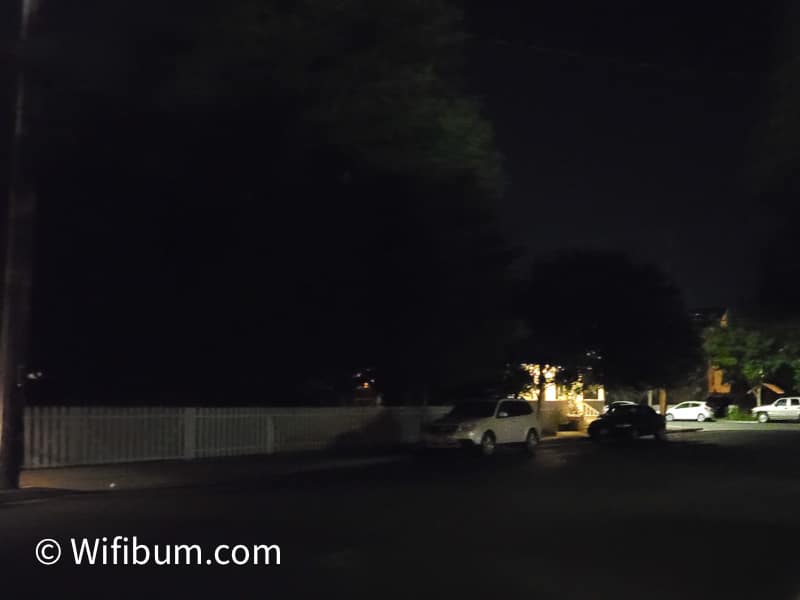
Instead of working from my tent, I worked from a library and slept on random roads within the city. I enjoyed some good food and mountain biking as my activities.
Other times, if I was near national forest or other public land, I would set up for a week or so and use that as my base camp.
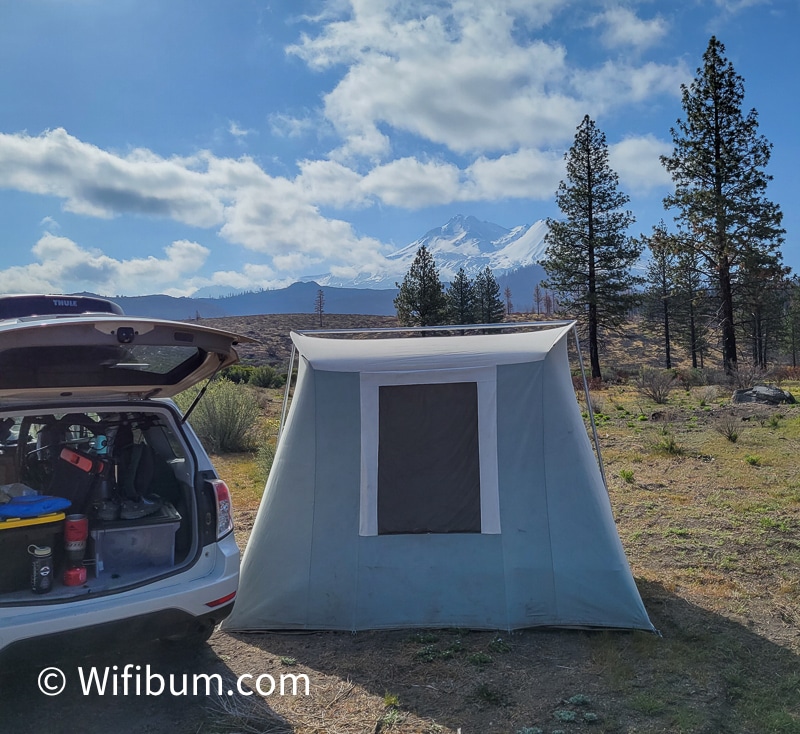
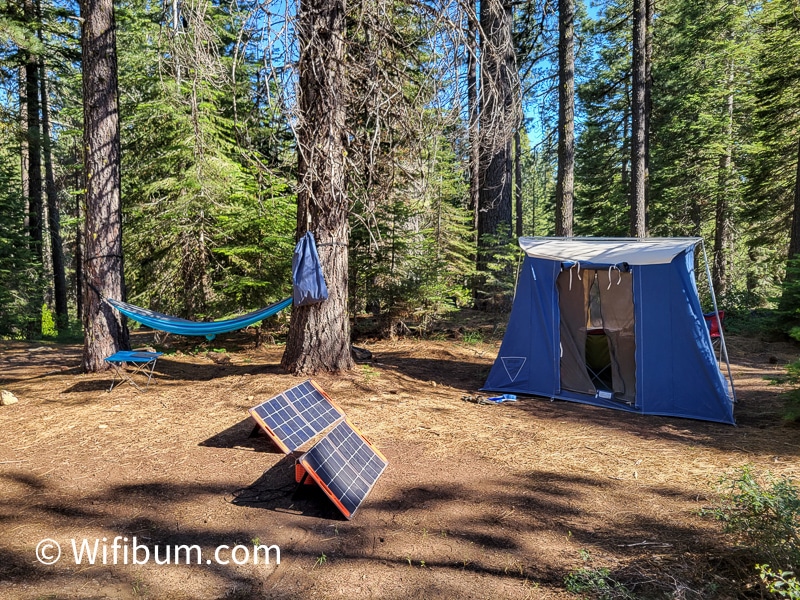
However, sometimes my vehicle was so packed, I had no room to sleep in the back. This was especially true when I visited friends for several weeks and brought extra gear.
I brought a backpacking tent to sleep next to my vehicle in those cases.
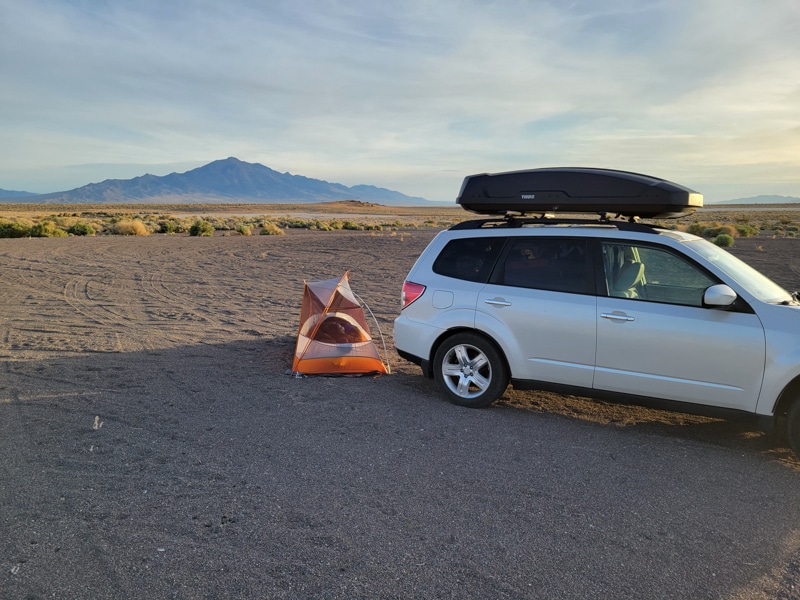
And for the time I didn’t…
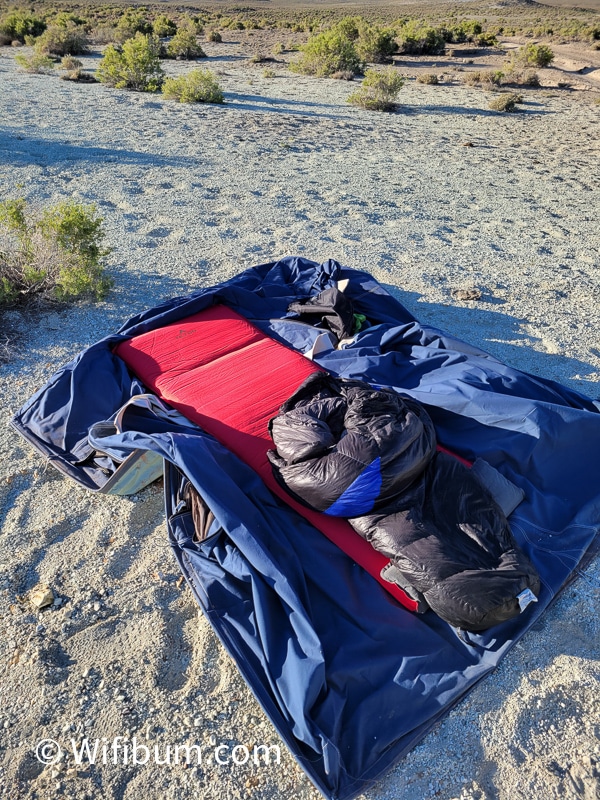
Cost of SUV Living and #CanvasTentLife
Obviously, if you want to test SUV life out, you can just pack the vehicle with current gear and see how it goes for a few weeks.
However, you’ll need additional gear if you want to try it out for a few months.
Here’s how it worked out for me.
Initial Costs
- Cargo Box for Roof Rack = $700
- Canvas Tent = $900
- Power Station(s) & Solar: $2,000
- Other Gear = $300
- Portable Table
- Comfortable Chair
- Misc
- DIY Curtains = $150
Total $4,050 (excludes some camping/sleeping gear I didn’t need to buy)
Here’s my current gear list for working and living out of an SUV/Tent.
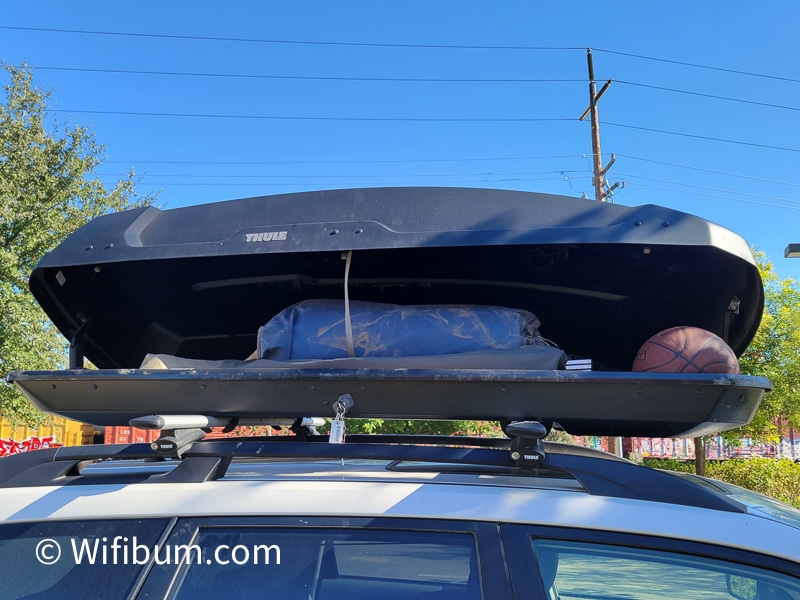
Recurring Costs
- Lots of gasoline
- More premade meals or eating out
- Storage Unit $100/mo
Because I knew I wouldn’t do this forever, I got a storage unit for my dresser, non-essential gear, mountain bike, and other things I didn’t want to sell.
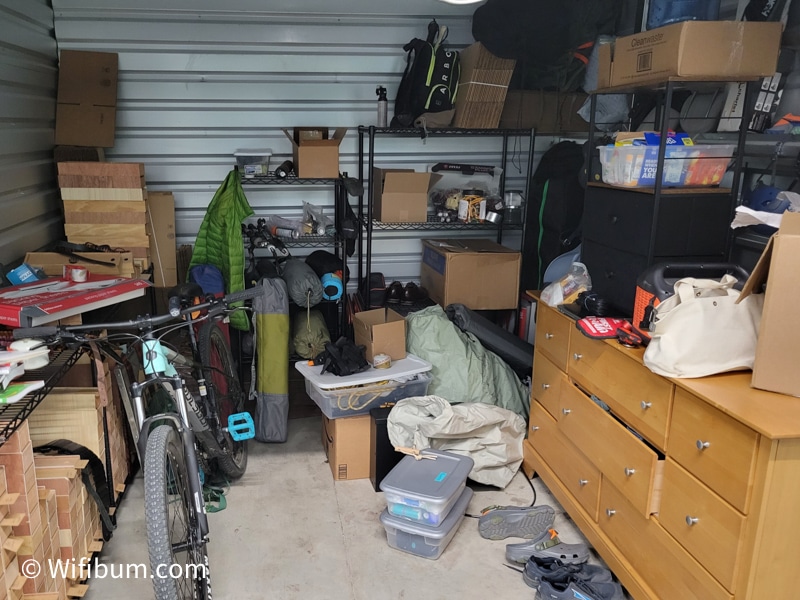
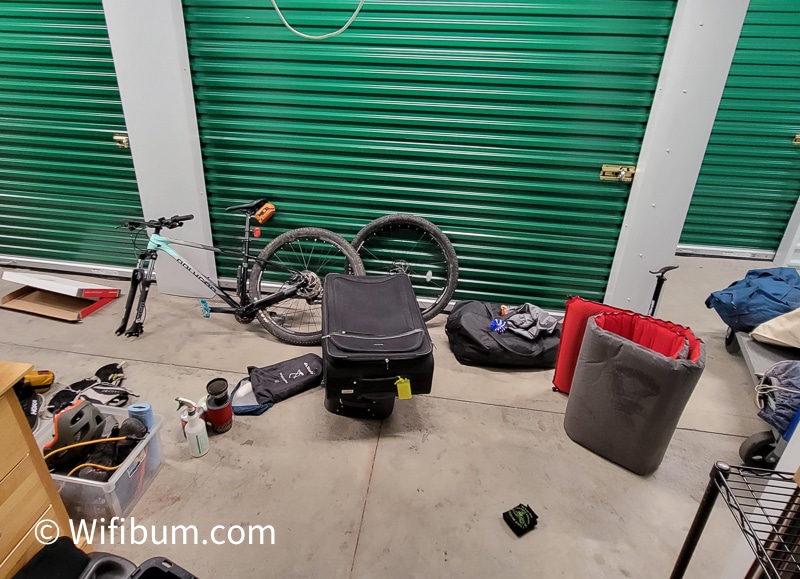
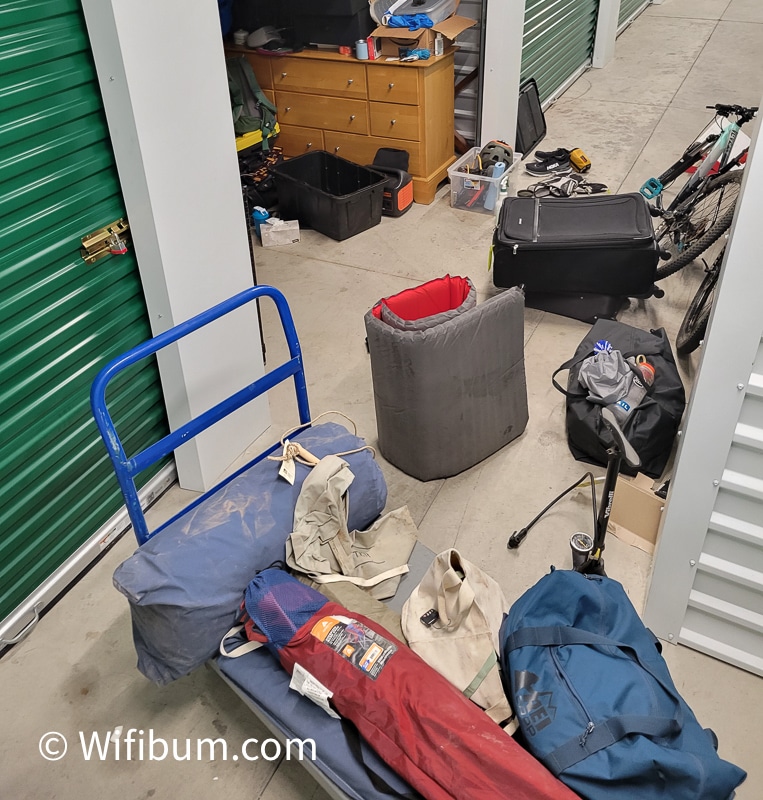
Savings
- Rent = $1,000/mo
So, in theory, my “SUV life” needed to last 4-5 months to break even. I didn’t track it, though.
The Best Way to Enjoy SUV Life and Tent Life
Over 6 months, I had a lot of ups and downs, and I was happy when I called it quits.
The times I remember the most are mountain biking, early morning mountain peaks, and hammocking beside rivers.
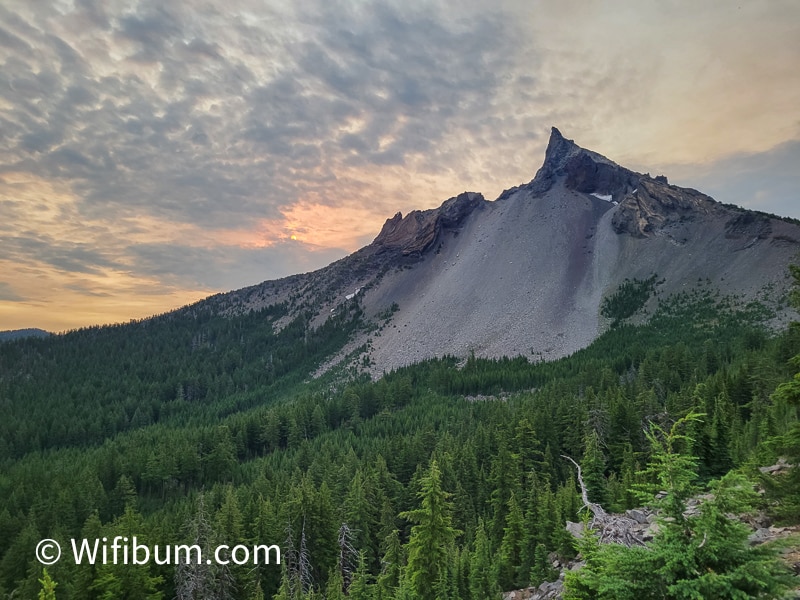
I have a full-time job, but it is super flexible, and I have an awesome boss.
This allowed me to do typical “weekend” activities during the week. Visiting national parks, popular trails, etc., on a Wednesday morning enhanced those experiences greatly.
Plan Trips with a Purpose
Planning trips was time-consuming. Trying to find places I could set up a tent, have cell service, AND be close to cool things was challenging.
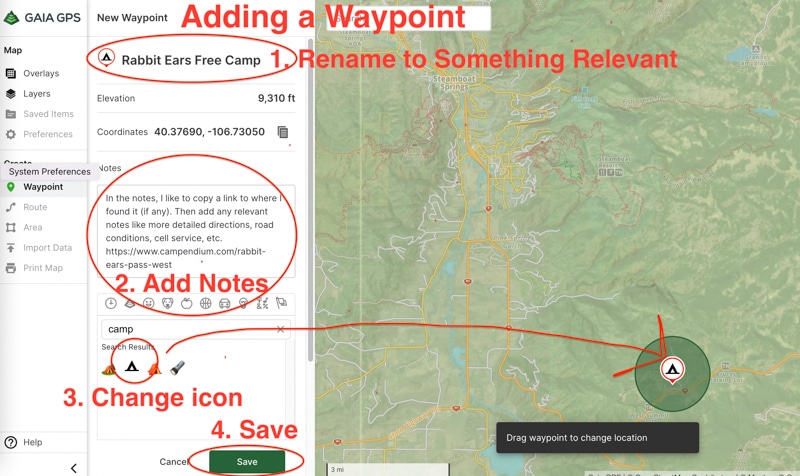
But when I did, my trips turned out much better.
This goes against what many mobile lifestyle folks want to do, but it worked for me.
Knowing where I was going to sleep, what I would do, and when I would do it helped me maximize the time I had in certain areas.
I may never revisit many of these areas, so I wanted to ensure I did any hikes or other activities before moving on. In addition, this helped reduce a lot of the stress.
How I Planned
Weeks before I started SUV life, I created a Google spreadsheet. On the left was each day for the next 6 months, with the weekends highlighted. Then I mapped the areas that were accessible each month (ie: In April, many mountain roads will be impassible, so those got put into the June-August areas).
This article on finding free camping spots goes through how I find free spots. And this one goes over how I found spots with cell service.
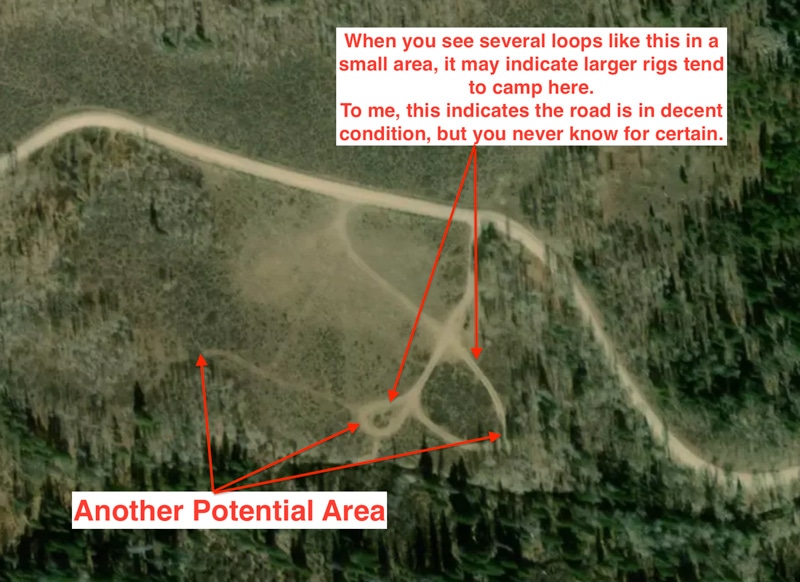
Other Caveats
I did this in a long-term relationship, and my partner stayed in the same place while I lived on the road. This presented various issues, including planning times to visit her or have her join in certain areas.
I probably stuck to 25% of my original plan, but it reduced my stress by 100% and gave me ideas for future trips outside of “full-time” SUV life.
Phone Calls and Video Chats
Having a small network of friends saved me from going crazy. I am not a huge “calling people out of the blue” person, but I became one.
Final Thoughts
I knew I wouldn’t do it full-time for years when I started this journey. But I knew it was going to become part of my life. I still go on several long trips yearly, just not 6 months at a time.
Knowing there was kind of an “end date” also made me feel like there was a clock ticking (negative) and I went pretty hard out of the gate.
I was running, mountain biking, and doing as much as possible each day.
I’d wake up early, work 3-4 hours, do something fun, and work in the evening when it got dark for another 3-5 hours.
Eventually, that style of living caught up to me, and I dialed it back. But then I found myself getting rather bored and felt pretty lonely.
What I missed
I missed working out at the gym, hanging with friends, being clean, and eating healthier. Also, the heat was tough to deal with besides simply hanging out at libraries and other public areas. Lastly, worrying about all my gear in my vehicle was stressful. I got a portable safe for my vehicle, which helped ease my mind slightly.
Would I do it again?
Nah. But I’m glad I did it.
I still go on long-term trips doing the same method as above, I now come back home to a nice shower and can relax in air conditioning.
Each person must find the right balance to fit their personality and goals.
